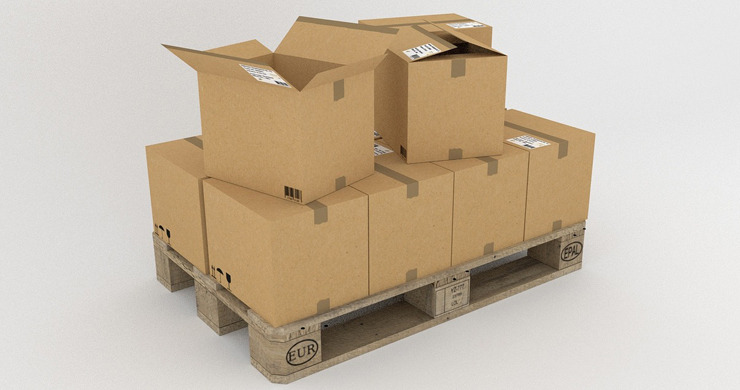The Transformative Role of Warehouse Management Systems (WMS) in Logistics
The logistics sector is continuously evolving, and Warehouse Management Systems (WMS) have become a key component in enhancing efficiency and competitiveness. As businesses strive to optimize their logistics processes, WMS emerges as an indispensable solution. This article provides a detailed exploration of what a WMS is, the types of warehouse management systems, examples of their use, benefits, essential features, and best practices for successful implementation.
What is a Warehouse Management System (WMS) in Logistics?
A Warehouse Management System, or WMS, is a technological solution designed to manage and optimize the daily operations of a warehouse. From the receipt of goods to the dispatch of products, a WMS allows for the control, coordination, and optimization of each activity developed within a warehouse. [More info: What is an WMS]
Key Functionalities of a WMS
- Inventory Control: Provides accurate and real-time tracking of available stock in the warehouse.
- Location Management: Optimizes the placement of products within the warehouse, maximizing space usage and reducing search times.
- Receiving and Dispatching of Goods: Facilitates and speeds up the entry and exit of products, ensuring accuracy in quantity and quality.
- Route Optimization: Enhances the efficiency of movements within the warehouse, reducing times and costs.
- Integration with Other Systems: Connects with ERP (Enterprise Resource Planning) and transportation systems, allowing an integrated management of the supply chain.
Types of Warehouse Management Systems (WMS)
There are various types of WMS, each adapted to different needs and levels of complexity within logistics operations. The choice of WMS type will depend on the warehouse size, volume of operations, and specific needs of the company.
Basic WMS
This system type is ideal for small businesses with simple operations. Its focus is on essential functionalities such as inventory control, location management, and order preparation. It is an economical solution that offers the basic functions necessary to manage a warehouse.
Advanced WMS
For more complex and larger volume operations, an advanced WMS is more suitable. These systems include additional functionalities like route optimization, integration with transportation systems, and automation capabilities. They are used by medium and large enterprises that require more detailed and precise management.
Integrated WMS
This type of WMS is fully integrated with other business systems like ERP, CRM, and transportation systems. It offers a holistic view of the entire supply chain, allowing for unified management and increased operational efficiency. It is ideal for companies looking for a complete and cohesive solution.
Cloud-based WMS
With the increasing adoption of cloud technologies, cloud-based WMS have become increasingly popular. These systems allow real-time information access from anywhere, facilitating remote management of the warehouse and system scalability according to the company’s needs.
Examples of Successful Warehouse Management System Implementations
Over the years, numerous companies have implemented warehouse management systems to optimize their logistics operations. Here are some notable examples:
- Amazon is a global logistics leader, and its success is largely due to the implementation of an advanced WMS. They use an automated system that combines robots and management software to handle millions of products in real-time. This system allows them to process and ship orders with exceptional speed and accuracy.
- Zara, one of the leading fashion brands, uses a WMS that allows them to manage their complex inventory across multiple warehouses globally. Their system is integrated with their ERP, facilitating centralized data management and quick response to market demands.
- IKEA has implemented a WMS that optimizes the management of its extensive inventory across its distribution centers. The system allows efficient space management and quick product localization, crucial for their self-service business model.
Benefits of Implementing a WMS
Implementing a WMS brings a series of significant advantages to any logistics operation:
- Improved Operational Efficiency: A WMS automates key processes, reducing reliance on manual tasks and minimizing human errors. This results in more agile operations with lower operational costs.
- Visibility and Control: With a WMS, companies gain total visibility over their inventory, allowing exhaustive control of the flow of goods and facilitating informed decision-making.
- Error Reduction: By automating inventory management and order preparation, a WMS significantly reduces errors, such as incorrect picking or shipping of wrong products.
- Better Space Utilization: Thanks to optimized location management, a WMS helps maximize warehouse space use, reducing costs and improving efficiency.
- Increased Customer Satisfaction: A WMS ensures that orders are prepared and shipped with greater accuracy and speed, translating into a better experience for the end customer.
Essential Features of a WMS
For a WMS to be truly effective, it must have a series of key features:
- User-Friendly Interface: An intuitive interface facilitates the system’s adoption by warehouse staff, reducing training time and operational errors.
- Flexibility and Scalability: The WMS must adapt to the changing needs of the business, allowing the addition of new functionalities and managing an increasing volume of operations.
- Integration with Other Systems: The ability to integrate with ERP, CRM, and transportation systems is crucial to ensure unified management of the supply chain.
- Real-Time Access: Access to real-time data allows for quicker and more accurate decision-making, improving responsiveness to demand changes or operational contingencies.
- Analytics and Reporting Capabilities: A good WMS should offer advanced analytics and reporting tools, allowing for the assessment of warehouse performance and identification of improvement areas.
Implementing a WMS: Key Steps
Implementing a WMS is not a simple process, but with proper planning, successful deployment can be ensured. Here are the essential steps:
- Needs Assessment: Before selecting a WMS, it is crucial to evaluate the specific needs of your operation. What problems are you looking to solve? What functionalities are indispensable?
- Vendor Selection: Research and compare different WMS providers. Evaluate not only the technical features but also post-sale support, ease of integration, and total cost of ownership.
- Project Planning: Develop a detailed plan that includes timelines, necessary resources, and implementation phases. This plan should be realistic and consider contingencies.
- Pilot Testing: Before full deployment, conduct a pilot test to identify potential issues and make adjustments without affecting the entire operation.
- Staff Training: Training of staff is crucial. Ensure that all system users are well-trained to avoid errors and maximize return on investment.
- Continuous Monitoring and Adjustments: Once implemented, it is vital to monitor the WMS performance and make adjustments as necessary to optimize its functioning.
Best Practices for Using a WMS
Implementing a WMS is just the first step. To reap the maximum benefit, it is important to follow certain best practices:
- Keep the System Updated: WMS providers often release updates that improve security and add new functionalities. Keep your system up-to-date to take advantage of these improvements.
- Continuous Warehouse Optimization: Don’t settle for the initial configuration of the WMS. Regularly analyze warehouse performance and adjust settings to improve efficiency.
- Ongoing Training: Staff should receive periodic training to stay abreast of new functionalities and best practices in using the WMS.
- Data Analysis: Use the WMS’s analytics tools to monitor key performance indicators such as order processing time, inventory accuracy, and space utilization.
- Automation: Explore further automation possibilities that your WMS may offer, such as integration with automated picking systems or the incorporation of artificial intelligence for demand prediction.
Efficient warehouse management is vital for the success of any logistics operation, and a WMS is a powerful tool that can radically transform this area of your business. From optimizing space to improving inventory management accuracy, the benefits of a well-implemented WMS are enormous. By following best practices and ensuring careful implementation, your company will be in a privileged position to compete in an increasingly demanding and dynamic market.





